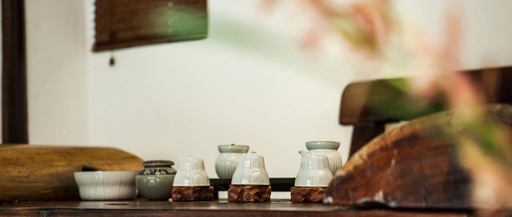
“New Perspectives on Traditional Chinese Medicine” series articles are not purely theoretical knowledge of TCM, but rather interpretations of dietary therapy and food-medicine homology ingredients from modern scientific and nutritional perspectives, aiming to broaden horizons, expand thinking, and inspire wisdom, providing new perspectives and ideas for understanding the wisdom of ancient people.
Today, we will discuss a flower whose leaves can remain “evergreen”.
Although it is said to be evergreen, it does not mean that its leaves do not fall; rather, they fall alternately, allowing it to have green leaves even in winter.
In folk tradition, it is called “Ren Dong” (忍冬), possibly implying “able to endure the cold winter climate”.
The flower we are going to talk about today is the flower of Ren Dong, also known as Jin Yin Hua (金银花) or Honeysuckle.
Honeysuckle is a traditional medicinal material in China, with a long history of medicinal use. Nowadays, it is commonly used clinically to treat conditions such as external heat diseases, wind-heat exterior syndrome, and sores and swellings.
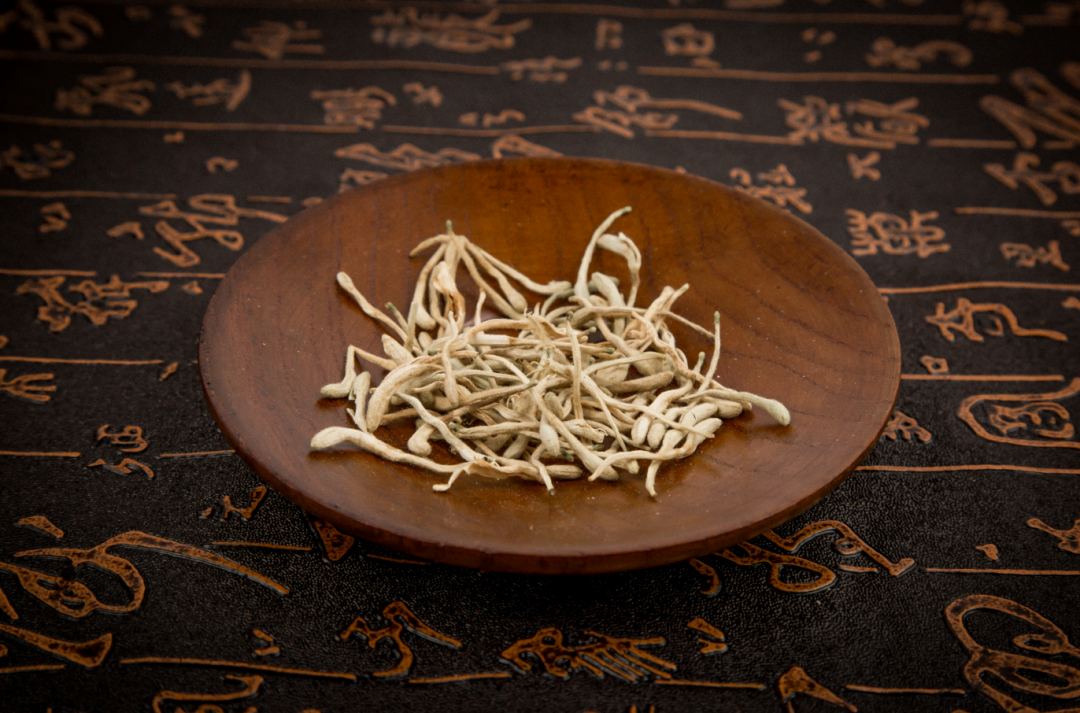
◎Image authorized by Baotu Network
How does this small flower “unleash its power” in the body? Let’s take a look.
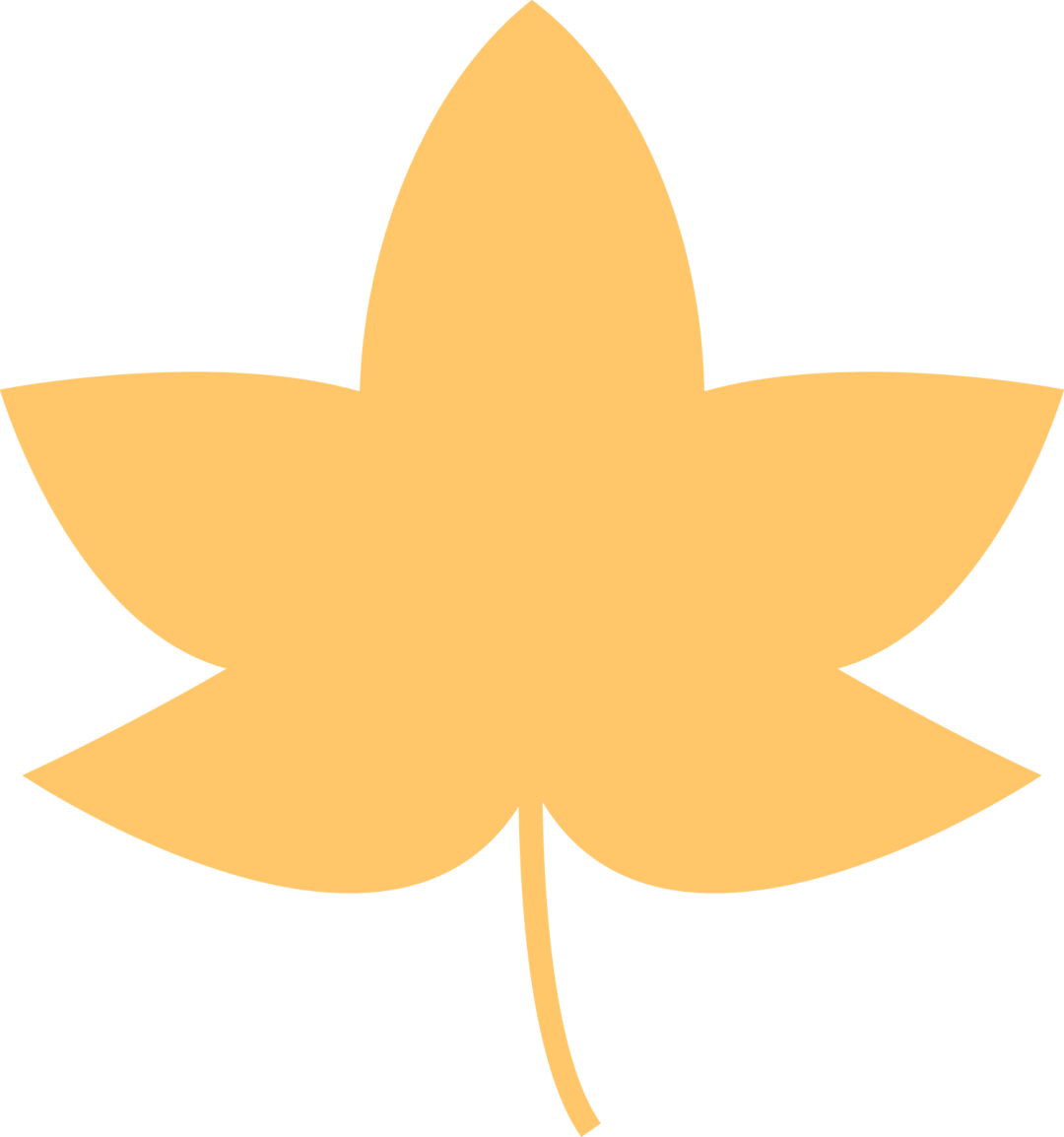
· Clearing Heat and Detoxifying, Used for Various Heat-Toxin Syndromes ·
Traditional Chinese Medicine (TCM) believes that Honeysuckle has a lightly dispersing nature and a strong ability to clear heat and detoxify, as well as functions such as benefiting the throat, cooling the blood, and stopping dysentery, making it suitable for various heat-toxin syndromes such as sore throat, sores and abscesses, and heat-toxin dysentery.
In modern clinical practice, doctors often use Honeysuckle to treat acute upper respiratory infections, acute tonsillitis, and sore throat.
Clinical practices have confirmed that using Honeysuckle to treat acute upper respiratory infections can relieve symptoms such as sore throat, nasal congestion, body aches, and fever, with over 91.2% of patients benefiting from it.
In clinical studies, patients with acute tonsillitis were randomly divided into a control group and an experimental group, both receiving conventional Western medicine treatment. On this basis, the experimental group was additionally treated with Honeysuckle. After the experiment, the clinical symptoms of the experimental group completely disappeared, indicating that Honeysuckle was helpful.
The ability of Honeysuckle to regulate such infectious diseases aligns with TCM’s approach to treating warm-heat diseases.
To explore the principle, it is likely closely related to its antibacterial and antiviral capabilities.
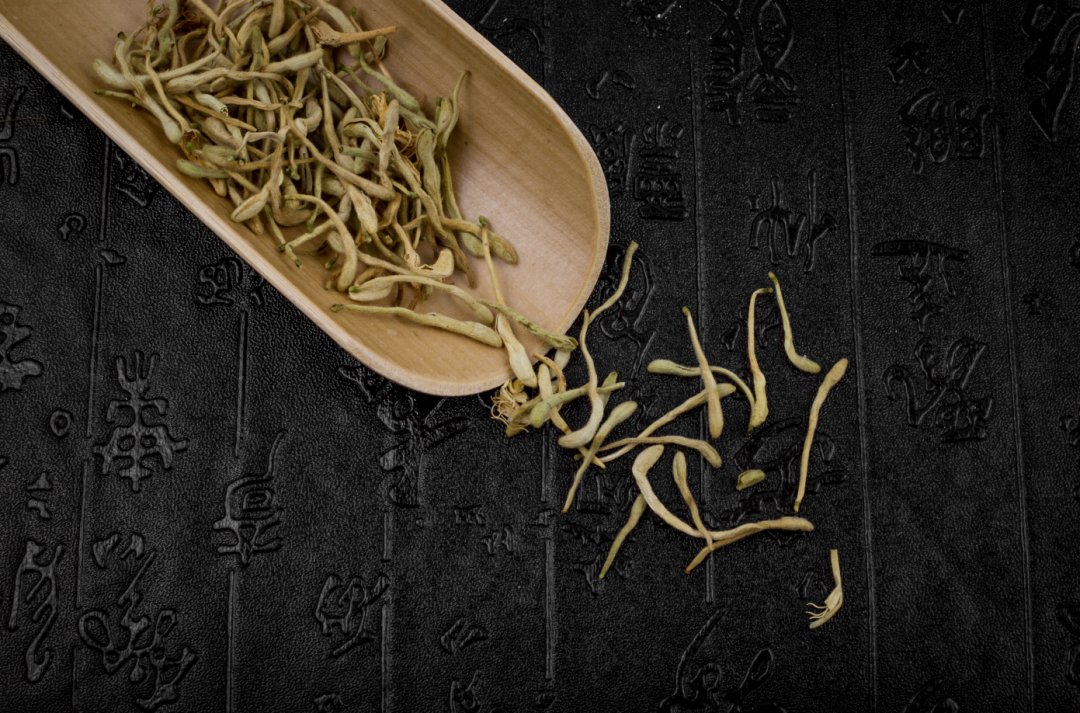
◎Image authorized by Baotu Network
Antibacterial
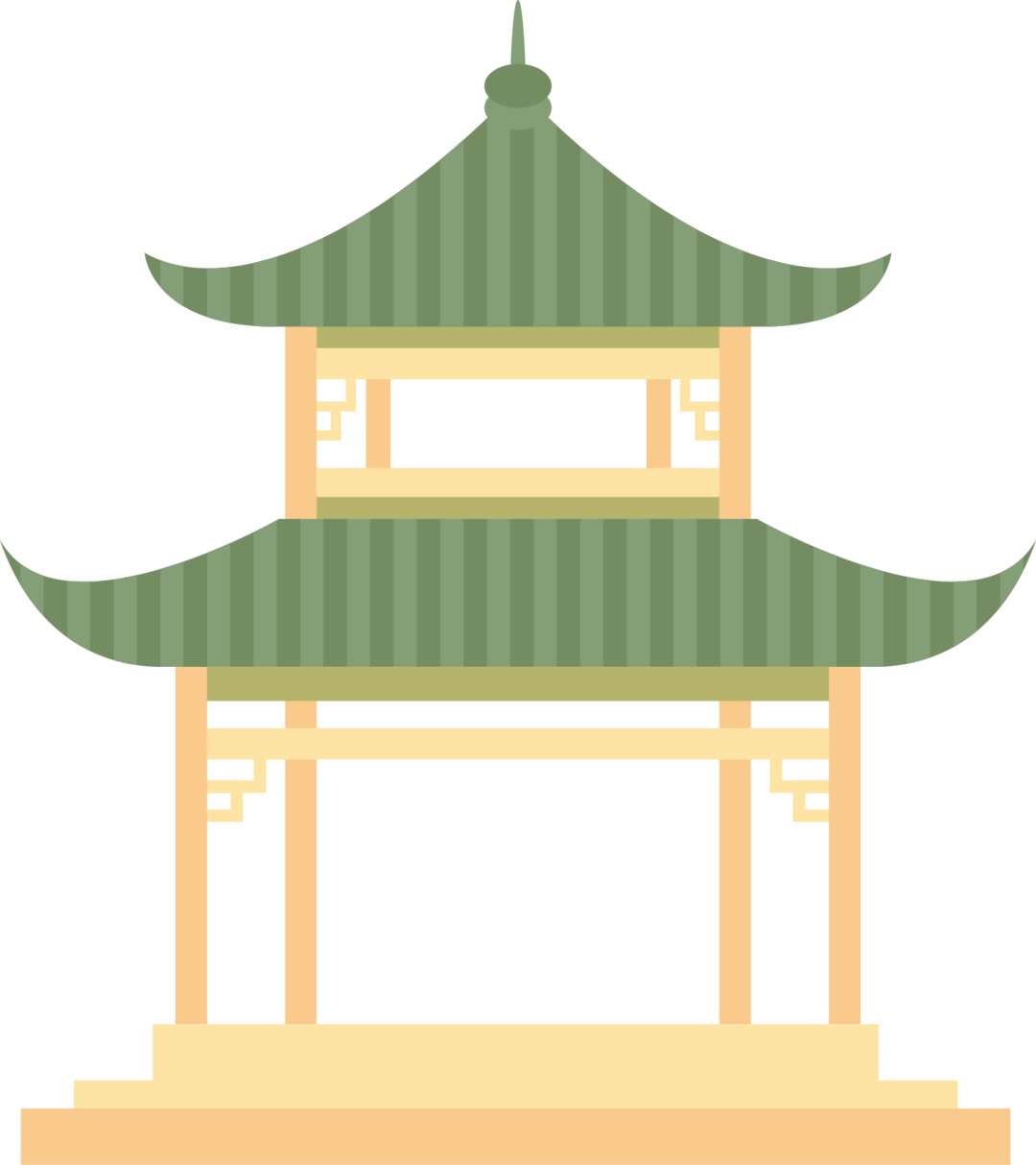
Researchers studying the antibacterial capacity of Honeysuckle extracts found that Honeysuckle extracts have strong inhibitory effects on clinically isolated Streptococcus pneumoniae, Staphylococcus epidermidis, Staphylococcus aureus, Escherichia coli, Streptococcus agalactiae, Staphylococcus saprophyticus, Pseudomonas syringae, and standard Staphylococcus aureus and Bacillus subtilis. Additionally, in vivo antibacterial experiments indicated its regulatory ability against Staphylococcus aureus and Streptococcus pneumoniae infections.
Some scholars used microcalorimetry to determine the antibacterial capacity of different parts of Honeysuckle, ranking them as follows: total chlorogenic acid > total green acid > total flavonoids > total iridoids, providing a basis for further research and development of Honeysuckle.
The antibacterial mechanism may involve active components in Honeysuckle affecting bacterial nucleic acids, hindering DNA replication and RNA synthesis, leading to changes in protein synthesis and expression, thereby exerting antibacterial effects.
Antiviral

Studies have shown that Honeysuckle has strong inhibitory effects on common respiratory viruses, with chlorogenic acid and caffeoylquinic acid being the main active substances against respiratory viruses.
Virus sensitivity experiments indicated that Honeysuckle alcohol extracts, water extracts, and water ultrasonic extracts can enhance the ability of cells to resist adenovirus infections in vitro.
Recent studies have found that Honeysuckle extracts can also extend the survival days of mice infected with the H1N1 influenza virus, reducing the number of deaths in H1N1-infected mice, demonstrating protective effects against H1N1 infections. It also reduces the lung index in H1N1-infected mice, alleviating lung lesions caused by H1N1 infection.
Sore Throat

Brewing Honeysuckle tea can help soothe the throat, relieve heat, and disinfect.
Reports indicate that in studies involving dozens of chronic pharyngitis patients, some were treated with Honeysuckle, and the results showed that the symptoms of pharyngitis disappeared in this group, demonstrating Honeysuckle’s ability to regulate chronic pharyngitis, with over 90% of patients experiencing relief.
When using Honeysuckle to treat sore throat, it can be used for both internal heat toxin and wind-heat invasion, often combined with detoxifying, dispersing wind-heat, and throat-benefiting herbs.

· Treating Sores and Abscesses ·
Honeysuckle clears heat and detoxifies, and in addition to regulating warm-heat diseases, it can also be used for sores and abscesses.
In ancient times, Honeysuckle was used to regulate surgical sores and abscesses, being an essential medicine for treating all internal and external abscesses.
Whether for internal abscesses or external abscesses, such as lung abscesses or intestinal abscesses, and for superficial external abscesses, it can be used internally or externally, and when crushed and applied, it can promote the reduction of redness, swelling, and pain in sores and abscesses.
Thus, Honeysuckle is an important medicine for regulating sores and abscesses in many formulas.
Modern science has also explored the mechanisms behind Honeysuckle’s abilities, and let’s take a look at that.
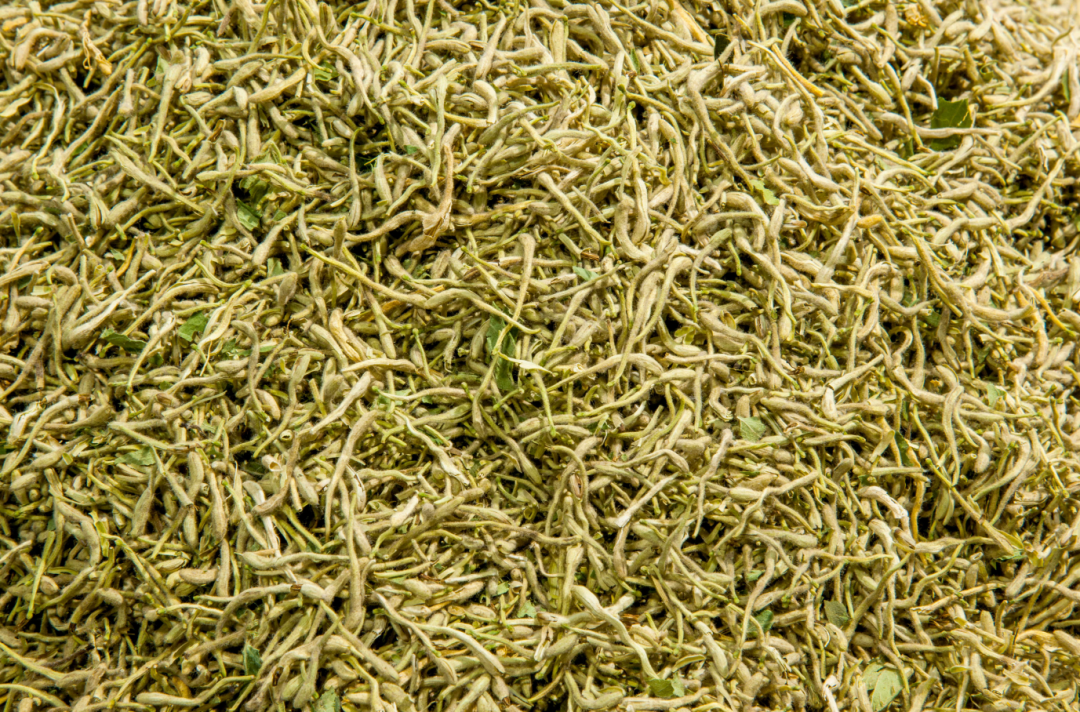
◎Image authorized by Baotu Network
Folliculitis

The “Compendium of Materia Medica” states about Honeysuckle: “It disperses wind and dampness, and treats various swellings, toxins, carbuncles, and scabies.”
Researchers attempted to use 200 grams of Honeysuckle with 1 liter of water, boiled for 30 minutes, and used it to wash the head, allowing the medicine to remain on the head for 10 minutes, once daily; simultaneously, they used Honeysuckle and licorice, decocted in water, to treat head Malassezia folliculitis, with 93.4% of patients experiencing symptom relief.
Modern research shows that Honeysuckle has broad-spectrum antibacterial capabilities, can resist viruses and fungi, and has inhibitory effects on various bacteria in vitro.
Moreover, Honeysuckle water extracts also have varying degrees of inhibitory effects on skin fungi and can inhibit and delay cell degeneration, thus having good regulatory effects on seborrheic dermatitis.
Rashes and Sores

The “Yunnan Materia Medica” states: “Honeysuckle clears heat and resolves various sores, carbuncles, and erysipelas.”
In clinical studies, numerous patients with rashes (including patients with pustular dermatitis, eczema, and mild skin erosion) were selected for research, and Honeysuckle was used to regulate them.
After the treatment, most patients’ skin lesions either disappeared or improved significantly, with 91.67% of patients benefiting.
Subsequently, researchers explored the mechanisms and found that Honeysuckle’s abilities may be related to its previously mentioned antibacterial and antiviral capabilities.
Honeysuckle regulates initial sores and abscesses, redness, swelling, and pain, often combined with heat-clearing, detoxifying, and blood-activating herbs; it regulates hard and deep-rooted carbuncles, often used with dandelion, purple flower, and wild chrysanthemum; it regulates intestinal abscesses and abdominal pain, often used with herba siegesbeckiae, rhubarb, and red vine; it regulates lung abscesses with cough and purulent blood, often used with herbs that clear lung heat, eliminate abscesses, and drain pus.


· Dispersing Wind-Heat, Used for Wind-Heat Exterior Syndrome and Warm-Heat Diseases ·
Honeysuckle has a fragrant aroma, adept at dispersing wind and releasing heat, and can also clear heat toxins.
TCM believes that Honeysuckle is a commonly used herb for regulating wind-heat exterior syndromes and can enter the blood and nutrients, being applicable at various stages of warm-heat diseases.
Anti-Inflammatory

Some manifestations of wind-heat exterior syndrome are related to inflammatory responses discussed in modern medicine.
Inflammation is a defensive response of the body to stimuli, generally manifested as redness, swelling, heat, and pain. The flavonoids and iridoids in Honeysuckle have the ability to inhibit inflammation.
Researchers have found that Honeysuckle extracts have good inhibitory effects on local acute inflammation, and its anti-inflammatory ability increases over time, even comparable to some Western medicines.
How does Honeysuckle achieve this?
Studies have found that Honeysuckle water extracts can inhibit inflammation while reducing the levels of prostaglandins, histamine, serotonin, and malondialdehyde in exudate, indicating that its anti-inflammatory mechanism may be related to inhibiting the synthesis and release of inflammatory mediators.
Heat-Reducing

Honeysuckle has certain heat-reducing abilities.
Research shows that Honeysuckle can increase the discharge frequency of heat-sensitive neurons under the influence of IL-1, while reducing the discharge frequency of cold-sensitive neurons under the influence of IL-1β. It is believed that reversing the changes in the discharge frequency of temperature-sensitive neurons caused by IL-1β may be one of its heat-reducing mechanisms.
Recent studies have further investigated Honeysuckle’s central heat-reducing mechanisms at the molecular level using immunohistochemistry, suggesting that another mechanism for Honeysuckle’s heat-reducing effects may be related to its inhibition of the expression of EP3 in POAH neurons.
Enhancing Immune Function

Researchers have intervened in immune-deficient models with Honeysuckle polysaccharides, monitoring thymus and spleen indices, hemolysin levels, and IL-2 content. The results indicated that Honeysuckle polysaccharides can improve the thymus and spleen indices of immune-deficient patients, promote the generation of hemolysin antibodies, and increase IL-2 levels, indicating that Honeysuckle polysaccharides can enhance the immune function of patients with immune deficiency.
Other scholars have also pointed out that Honeysuckle flavonoids can improve the organ indices of immune-suppressed models and enhance the activity of serum ACP, AKP, and LSZ, as well as the activity of T-AOC and SOD in spleen and thymus tissues, while significantly reducing MAO and MDA levels, indicating that Honeysuckle flavonoids have good immune-regulating capabilities.
Honeysuckle regulates wind-heat exterior syndrome or initial warm diseases, often used in conjunction with Lian Qiao (连翘) and other wind-heat dispersing herbs; when regulating excess heat in the Qi level, it is often combined with heat-clearing and fire-purging herbs; when regulating heat entering the blood level, high fever with delirium, and rashes with bleeding, it is often used with heat-clearing and blood-cooling herbs.


· Clearing and Resolving Summer Heat, Used for Summer Heat Syndrome ·
Honeysuckle has the ability to clear and resolve summer heat, regulating summer heat thirst, often distilled into Honeysuckle dew for use, or combined with other summer heat-clearing herbs. It can also be used for children’s heat sores and prickly heat.
Have you ever wondered: “When describing a person feeling thirsty in hot weather, why not just say thirsty? Why use the term ‘irritable thirst’? Can’t we just say thirsty? Why make it sound so elaborate?”
It’s not just a “fancy expression in TCM”; when people are thirsty in the summer heat, they really do feel “irritable”.
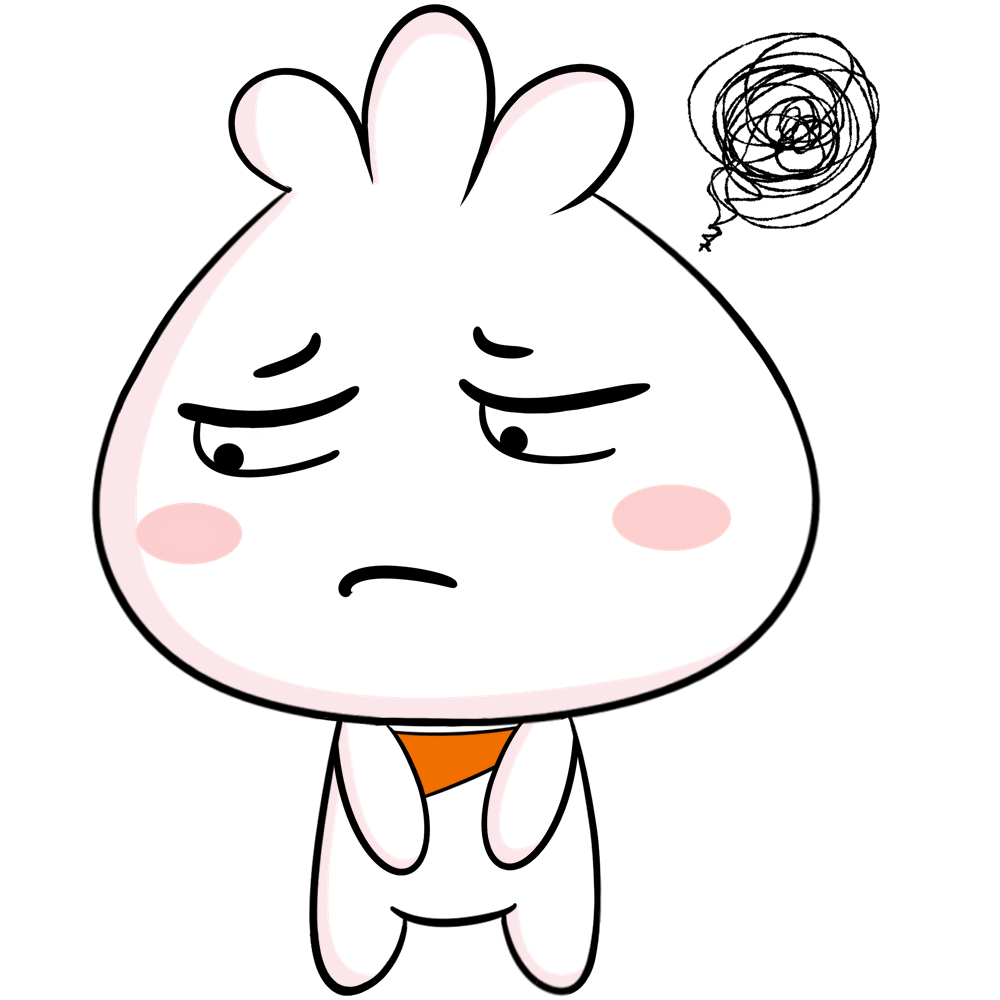
◎Image authorized by Baotu Network
Why is that?
We all know that a normal person’s body temperature is generally constant, resulting from a balance between heat production and heat dissipation.
Heat production mainly comes from the basic heat generated by metabolic processes in the body, and muscle contractions also produce heat.
Heat dissipation relies on radiation, evaporation, convection, and conduction.
If we are in a high-temperature, high-humidity, and poorly ventilated environment, the body’s heat dissipation is affected, and the temperature regulation center will try to adjust, such as by dilating skin blood vessels and sweating to increase heat dissipation.
It’s like a seesaw, with one side representing heating and the other side representing cooling; we must maintain the balance of the seesaw as much as possible.
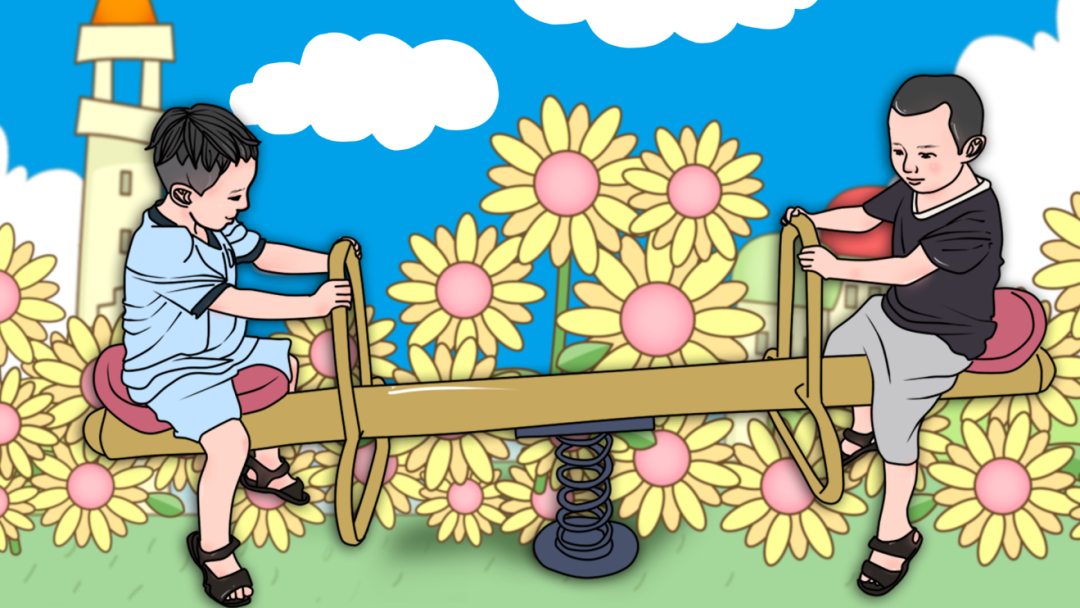
◎Image authorized by Baotu Network
If the heating side is affected by the environment and suddenly gains weight, the center will try to add weight to the “cooling” side to maintain balance.
However, this “weight” cannot be increased indefinitely; once it exceeds the seesaw’s load, it may break.
Long-term exposure to high-temperature, high-humidity, and poorly ventilated environments can overload the temperature regulation center, causing it to malfunction and shut down…
At this point, in addition to excessive sweating, the body may also experience electrolyte imbalances, such as significant losses of potassium and calcium ions, making our thirst likely accompanied by irritability, which is what TCM refers to as “summer heat irritability thirst”.
Research shows that Honeysuckle helps regulate the excitability of the central nervous system, adjusting the body’s heat production and dissipation. Additionally, Honeysuckle also has certain abilities in regulating electrolytes in the body.
We often boil some mung bean soup in summer to clear heat and cool down; when cooking mung bean soup, adding some Honeysuckle will enhance its “cooling power”.
Moreover, Honeysuckle dew, made primarily from Honeysuckle, is also a commonly used drink for clearing summer heat in summer.
Especially for those who are afraid of the cold nature of Honeysuckle, choosing Honeysuckle dew is gentler and more balanced than brewing Honeysuckle tea or boiling it in water.


· Eating Flowers and Grasses ·
To prevent heat stroke in the summer heat, you can, as mentioned above, boil Honeysuckle and mung beans together to drink, or simply brew Honeysuckle tea.
In addition, using flowers in cooking also has its unique flavor.
✿ Honeysuckle and Radish Honey
Take 100 grams of white radish, 6-9 grams of Honeysuckle, and an appropriate amount of honey.
Peel and wash the white radish, cut it into pieces, mix it with Honeysuckle and honey in a bowl, and steam it for 10 minutes. Take one dose daily, divided into three servings.
This dish has the effects of dispersing wind, promoting lung function, and resolving phlegm and cough, suitable for wind-heat invasion, head and body pain, dry throat and itchy throat, thick phlegm, aversion to wind and body heat, and thirst with a preference for drinking.
✿ Honeysuckle Porridge
Take 6-9 grams of Honeysuckle, 100 grams of japonica rice, and an appropriate amount of white sugar.
Wash the Honeysuckle clean, put it in a pot, add an appropriate amount of water, soak for 5-10 minutes, then boil to extract the juice, add the japonica rice to cook porridge, and when the porridge is cooked, add white sugar and boil for another minute.
This porridge clears heat and detoxifies, suitable for preventing heat stroke in summer, as well as wind-heat colds, heat-toxin sores, and sore throat.
✿ Honeysuckle Pear and Lotus Root Soup
Take 6-9 grams of Honeysuckle, 250 grams of pear, 200 grams of fresh lotus root, and an appropriate amount of white sugar.
First, peel and cut the fresh pear and lotus root into pieces. After cleaning the Honeysuckle, boil it to extract the juice, then add the pear and lotus root to cook until done, and sweeten with white sugar.
This soup can clear heat and detoxify, suitable for lung heat cough, treating sores and abscesses, and acne.
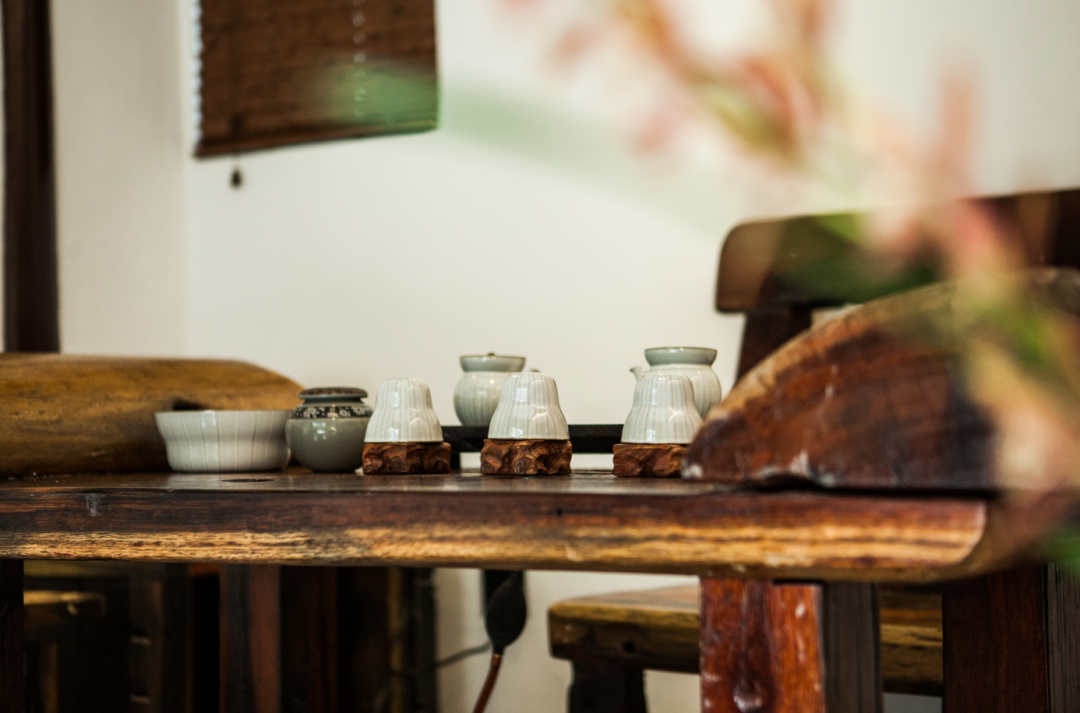
◎Image authorized by Baotu Network
The high temperatures of summer are “merciless”; traditional Chinese medicine is dedicated to helping.
As the temperature remains high, Honeysuckle cannot help but stretch its arms and legs, always ready to showcase its abilities!
On hot summer afternoons, brew a cup of flower tea, looking forward to the flowers blooming in the water, anticipating the intoxicating fragrance filling the entire room, and the joy of sipping and the coolness after drinking.
Eating flowers and grasses, the joy of summer is that simple~
[References]
1. Chlorogenic acid ameliorates memory loss and hippocampal cell death after transient global ischemia. The European journal of neuroscience, 2020.
2. Zhu Jiasheng, Gao Weihao, Fan Hongyan. Research progress on the pharmacological effects of honeysuckle extracts. Journal of Jilin University of Medicine, 2022.
3. Chlorogenic Acid (CGA) Isomers Alleviate Interleukin 8 (IL-8) Production in Caco-2 Cells by Decreasing Phosphorylation of p38 and Increasing Cell Integrity. International journal of molecular sciences, 2018.
4. Xiong Lewen, Jin Ying, Wang Yanyu, etc. Research progress on chemical constituents, pharmacological activities and in vivo metabolism of honeysuckle phenolic acids. Chinese patent medicine, 2022.
5. Liu Xiaolong, Li Chunyan, Xue Jintao. Research progress on main active components and pharmacological effects of honeysuckle. Journal of Xinxiang Medical College, 2021.
6. Novel caffeoylquinic acid derivatives from Lonicera japonica Thunb. flower buds exert pronounced anti-HBV activities. RSC Advances, 2018.
7. Guo Jinhan, Chen Jianlin, Ge Lanlan, etc. Pharmacological value of honeysuckle in the treatment of mild novel coronavirus pneumonia. E-Journal of Emerging Infectious Diseases, 2021.
8. Lu Pin, Li Xiaotian. Study on anti-inflammatory and antibacterial activity and molecular mechanism of honeysuckle flower based on in vitro experiments and network pharmacology. Chinese Modern Applied Pharmacy, 2021.
9. Chlorogenic Acid Attenuates Dextran Sodium Sulfate-Induced Ulcerative Colitis in Mice through MAPK/ERK/JNK Pathway. BioMed Research International, 2019.
10. Zheng Yiling, Ouyang Yong, Mei Quanxi, etc. Analysis of the application of honeysuckle in the prevention and treatment of novel coronavirus pneumonia. Asia Pacific Traditional Medicine, 2021.
11. Mary. Study on the pharmacological effects of honeysuckle. Bright TCM, 2020.
12. Chlorogenic acid modulates hypoxia response of Hep3B cells. Personalized Medicine Universe, 2017.
13. Guan Xiufeng, Wang Rui, Li Xiaolong, etc. New progress in the research on the chemical constituents and pharmacological effects of honeysuckle. Chemical Engineer, 2020.
14. Peng Sha, Huo Xiaoqian, Huo Mengqi, etc. Research on the markers of heat-clearing and detoxifying efficacy of honeysuckle flower based on systematic traditional Chinese medicine. Chinese Journal of Traditional Chinese Medicine, 2020.
15. Chlorogenic acid effectively treats cancers through induction of cancer cell differentiation. Theranostics, 2019.
16. Yellow and silver are good. Medicinal components and pharmacological analysis of traditional Chinese medicine honeysuckle. 2020.
17. Guangyan Heron. Analysis of the pharmacological effects and clinical application of honeysuckle. Chinese Medicine Guide, 2018.
18. Climb high. Research progress on the clinical pharmacological effects of honeysuckle. Medical Information, 2018.
19. Two new triterpenoid saponins from the flowers and buds of Lonicera japonica. Journal of Asian natural products research, 2008.
20. Li Haiyan. Medicinal components and pharmacological analysis of honeysuckle. Strait Pharmacy, 2017.
21. Zhao Mengjiao. Active ingredients and pharmacological research progress of honeysuckle. World Latest Medical Information Digest, 2016.
22. Chemical Constituents and LC-profile of Fresh Formosan Lonicera Japonica Flower Buds. Natural Product Communications, 2016.
23. Yuan Jingye. Analysis of anti-endotoxin, antipyretic and anti-inflammatory effects of honeysuckle. World Latest Medical Information Digest, 2016.
24. Feng Xinyu, Yao Zhiling, Li Minghui. Research progress of modern pharmacology and clinical application of honeysuckle. Chinese Medicine Research, 2015.
25. Hu Xiujuan, Lei Ming. Clinical experience of honeysuckle in treating adolescent acne. Chinese Aesthetic Medicine, 2015.
26. Antioxidant and Cytoprotective Effects of the Di-O-Caffeoylquinic Acid Family: The Mechanism, Structure-Activity Relationship, and Conformational Effect. Molecules, 2018.
27. Yang Xiaojie. Analysis of components and pharmacological effects of honeysuckle. World Latest Medical Information Digest, 2015.
28. Liu Dandan, Wang Peizhi, Miao Mingsan. Analysis of the efficacy characteristics of honeysuckle. Chinese Medicine Journal, 2013.
29. Honeysuckle extract relieves ovalbumin-induced allergic rhinitis by inhibiting AR-induced inflammation and autoimmunity. Bioscience reports, 2019.
30. Zhang Baixia, Zhou Fengqin, Guo Qingmei. Research progress of flavonoids in honeysuckle. Chinese Journal of Experimental Formulas, 2012.
31. Wang Haijun. Analysis of the application of honeysuckle in pharmacology. Medical Information, 2011.
32. Bai Lihong, Zou Yu. Pharmacological analysis and application of honeysuckle. Modern Drug Application in China, 2011.
33. Chlorogenic acid induces reactive oxygen species generation and inhibits the viability of human colon cancer cells. Anti-cancer drugs, 2017.
34. Zhang Xiuping. Analysis of the application of honeysuckle in pharmacology. Medical Information, 2009.
35. Song Weixia. Study on the water-soluble chemical constituents of honeysuckle. China Union Medical College, 2008.
36. Chlorogenic acid regulates apoptosis and stem cell marker-related gene expression in A549 human lung cancer cells. Molecular and cellular biochemistry, 2018.
37. Duan Lian, Gao Guang, Yang Jingyu, etc. Effects of honeysuckle, forsythia and their compatibility on the DNA of peripheral blood lymphocytes in mice. 2004.
38. Kao Yuping, Rong Fengying, Li Baicheng. Analysis of the pharmacological effects of honeysuckle in the treatment of exogenous fever. Shaanxi Traditional Chinese Medicine, 2004.
Classic knowledge is passed down with care, and experience is validated from “new” perspectives. This is the New Perspectives on Traditional Chinese Medicine column, bringing you from life into science, and from TCM to the world. If you would like to learn more about other food-medicine homology ingredients, feel free to leave us a message!
— THE END —
Related Articles Review
☀In the hot and humid summer, feeling irritable, sweating, and thirsty? Learn about fruits that clear heat, replenish fluids, and aid digestion!
☀Clearing heat and relieving fire, regulating mouth sores, and calming the heart to get through summer!
☀In the sweaty summer, just drinking water to replenish fluids is not enough! Are there vegetables that generate fluids and clear heat?
For more related articles, please search within the public account.
☀Article Search Guide
❃Article by: Yi Ru
❃Editor: Yi Ru
❃Review: Zi Ye
❃All images in the text are credited; please do not use without authorization.

